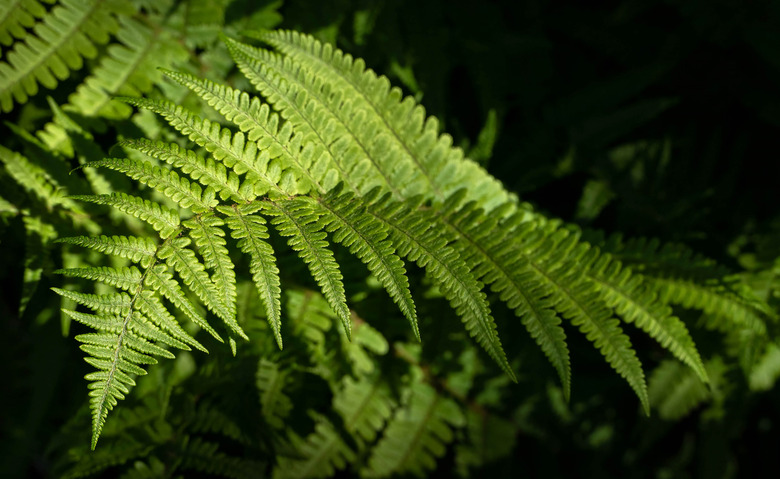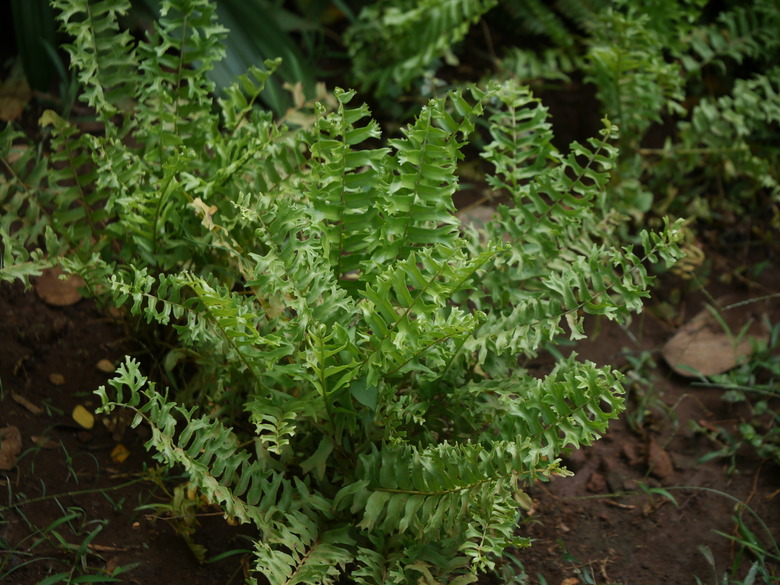How To Care For Ferns
Most ferns, that ubiquitous forest plant, appreciate the cool temps and plenty of moisture that occur in their native wooded habitat. There are about a gazillion (OK, maybe only 9,000) varieties of ferns of not only multiple genera, but of multiple botanical families as well.
So let's consider the needs of most ferns either native to the U.S., planted in U.S. gardens or enjoyed as houseplants—for instance, the Boston fern (Nephrolepis exaltata 'Bostoniensis') that you might be growing in a hanging basket in your living room, or the ostrich fern (Matteuccia struthiopteris), a native species and one that is commonly planted in home gardens.
While most common ferns share similar growing needs, it matters if you are growing them indoors or outside.
How to Care for Outdoor Ferns
If you have a shaded part of your garden in which little else grows, a fern will likely find it a desirable spot. However, be sure you select a hardy fern rather than a tropical variety, because some ferns cannot make it through winter in cold climates. Ask your local garden center about the variety if you don't know.
Temperature and Light
Locate the ferns in a cool, mostly shaded area of the garden, ideally on a north-facing or east-facing wall where they aren't subject to hot afternoon temps. Some ferns can't produce healthy fronds if they receive too much sun or, conversely, not enough; for example, if the ferns are planted in deep shade that is never penetrated by the sun, their fronds may be small or thin.
Soil and Moisture
Like most plants, ferns require well-draining soil, but ferns actually prefer somewhat sandy soils. If your garden has heavy soil on the clayish side, amend it with organic matter before planting ferns; alternatively, plant ferns in raised beds where they can get good aeration. Water weekly during the summer.
Tip
Never let your ferns dry out. In summer, provide about 1 inch of water per week unless it rains.
Fertilizing and Pruning
Fertilize outdoor ferns in the spring, just after you see new growth. Be careful, however, as too much fertilizer can damage a fern. Choose a slow-release, balanced fertilizer or a balanced organic fertilizer and apply following the product directions.
The only pruning a fern typically needs is the removal of dead and withered fronds. Cut these off close to the base of the fern.
How to Care for Ferns as Houseplants
You may have brought a fern indoors where you can enjoy it whatever the outside temperatures are. This is actually the most challenging environment to control when it comes to ferns, because most people prefer a nice, warm, even temperature in their homes, while ferns like it cool.
Temperature and Light
The typical indirect light provided by an indoor location is just about perfect for most ferns, which appreciate a location near a northern window.
If your fern is in a southern or western window, you will likely need to draw the curtains or shades during the summer months to prevent it from burning.
Tip
Some ferns do prefer bright light, so be sure you know your fern variety. For example, climbing fern (Lygodium japonicum) requires bright light, although you must give it good moisture.
Soil and Moisture
Ferns that are grown in pots like a tight cozy space where their roots are cradled in a somewhat confined area with perhaps just 1 inch of space around the root system.
For this reason, choose a pot that is not too big and fill it with a well-draining soil mixture, ideally with pebbles or broken crockery at the bottom. Be sure to let the fern fully outgrow its pot before transplanting.
Moisture is where it gets tricky for indoor ferns, which usually require a level of humidity that does not naturally exist in a household. Ferns like about 40 to 50 percent humidity, although they can tolerate just 30 percent. Here are some ways you can combat the typically dry air in your home:
- Use a humidifier, which can also be a healthy addition for you and your family.
- Place your potted ferns on saucers containing water with a little gravel. Take care that the water level is always just below the gravel, because the last thing a fern likes is its roots in sitting water.
- Mist the ferns regularly, always in the morning, so they have a chance to dry out.
Fertilizing and Pruning
The fertilizer schedule depends mainly on the type of fern you have. For example, a Boston fern needs monthly fertilizer during the growing season (about April to September) and then only every two months in the cooler season. Conversely, the staghorn fern (Platycerium bifurcatum) needs very little fertilizer and is happy with a single, annual top dressing.
Similar to outdoor ferns, indoor ferns require little pruning; just remove dead or brown fronds.



